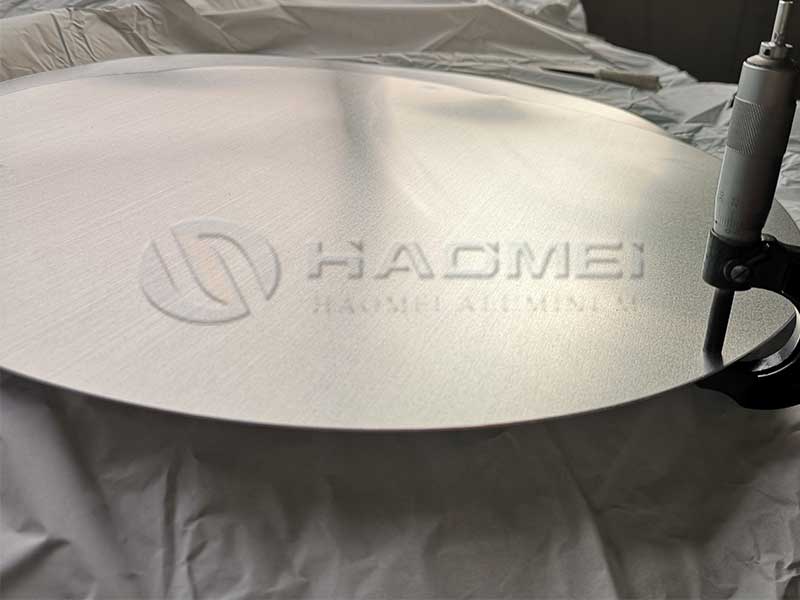Alloy 3003 cookware aluminium circle disc for utensils
Alloy 3003 Cookware Aluminium Circle Disc for Utensils: A Blend of Artistry and Practical Engineering
When we think of cookware, our minds usually wander to sleek pots and pans with vibrant finishes. But rarely do we pause to consider the fundamental material itself, the very canvas on which culinary creations come to life. Among the many metals favored by artisans and manufacturers, the alloy 3003 aluminium circle disc holds a quietly powerful role—especially in the world of utensils and cookware manufacturing.
Why Alloy 3003?
The Aluminium-Manganese alloy 3003 boasts an interesting persona in the metal family. With approximately 1.2% manganese added to pure aluminium, this alloy enhances strength by about 20% without sacrificing corrosion resistance—a crucial trait for kitchenware that frequently encounters steam, water, and acidic ingredients. Alloy 3003 stands out because it balances durability and lightweight properties, making it ideal for cookware that cooks food evenly yet remains manageable to handle.
Working with 3003 alloy aluminum circles for cookware presents unique challenges compared to other aluminum alloys. Its excellent workability and relatively good corrosion resistance make it ideal for deep drawing and spinning processes required for complex utensil shapes. However, its slightly lower strength compared to alloys like 6061 necessitates careful consideration during tooling design. We've seen issues with thinning or tearing during the forming process if the die isn't perfectly optimized, especially for larger diameter circles or deep drawn pieces. Surface finish is another concern; even minor imperfections in the initial circle can be magnified during forming, leading to cosmetic defects which are unacceptable in high-end cookware. Therefore, rigorous quality control throughout the entire supply chain, from raw material inspection to final product inspection, is paramount.
Furthermore, the inherent softness of 3003 alloy influences the final product's performance characteristics. While its malleability aids in the manufacturing process, it can also contribute to increased susceptibility to scratching and denting during use. We've found that surface treatments like anodizing are crucial not only for enhanced corrosion resistance and aesthetics but also for improved hardness and scratch resistance. The choice of anodizing process and the resulting oxide layer thickness directly impacts the durability and lifespan of the final cookware. Balancing the cost-effectiveness of the manufacturing process with the desired final product properties, while maintaining consistent quality, is a constant balancing act in our production line.
The Circle Disc: A Perfect Starting Point
In cookware production, the "circle disc" refers to the flat, round aluminium sheets punched or cut into discs, which serve as blank canvases for forming pots, pans, or utensil components like lids and bases. Choosing alloy 3003 in the shape of circle discs is no coincidence. Their uniform thickness, malleability, and resistance to work hardening allow manufacturers to efficiently press and shape highly consistent cookware pieces that withstand frequent heating and cooling cycles.
From a craftsperson’s viewpoint, working with these discs is akin to shaping art. The metal’s ductility offers a forgiving surface—allowing intricate designs without the risk of cracking, while its strength ensures functional longevity. Each circle disc eventually transforms into a tactile object central to daily kitchen rituals, linking raw materials to memorable meals.
Beyond Functionality: Sustainability and Reliability
Not often discussed in popular cookware rambles is sustainability. Aluminium alloy 3003 is approximately 100% recyclable with minimal quality loss. Using circular economy principles, discarded utensils or offcuts can be melted and reprocessed into new circle discs. This not only reduces environmental impact but also underscores a broader responsibility shared by manufacturers crafting utensils that are as kind to nature as they are to the cook.
Furthermore, the natural corrosion resistance of alloy 3003 means cookware retains its sheen and structural integrity for years. Unlike cheaper materials that might warp or rust, the aluminium circle discs translate their inherent reliability directly into consumer value.
https://www.al-alloy.com/a/alloy-3003-cookware-aluminium-circle-disc-for-utensils.html


